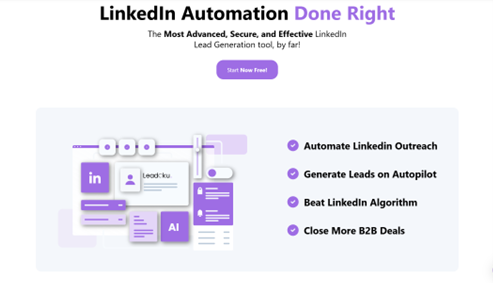Part 2 In The Series “Mastering Modern Business Success: Key Strategies for Sustainable Growth and Competitiveness“
Sustainability has become the cornerstone of business success. Developing an ESG framework is no longer just a good-to-have—it’s an essential strategy for thriving in a world where customers, investors, and regulators increasingly prioritise environmental, social, and governance (ESG) values. If your business is still treating sustainability as an afterthought, you could be missing out on growth opportunities, cost savings, and brand loyalty!
Disclosure: If you click on my affiliate/advertiser’s links, I am going to receive a tiny commission. AND… Most of the time, you will receive an offer of some kind. It’ s a Win/Win!
I’ve spent years observing how businesses of all sizes are navigating the shift towards sustainability. What strikes me most is how ESG strategies can transform not only a company’s public image but also its internal culture and operational efficiency. Take Tesla, for example. It isn’t just selling electric cars—it’s redefining mobility and energy use, aligning its business goals with the global push for sustainability.
This article will explore how you can develop and implement an ESG framework that aligns with your business values while driving growth. Whether you’re a start-up or a well-established company, understanding how sustainability strategies in business can impact your bottom line is crucial. I’ll guide you through the practical steps to ensure your efforts are meaningful and measurable.
Sustainability isn’t just about ticking regulatory boxes. It’s about making long-term decisions that benefit your business, your stakeholders, and the planet. But I know this can feel overwhelming, especially if you’re not sure where to start or how to measure success. That’s where this article comes in—to simplify the process and help you take actionable steps.
By the end of this guide, you’ll have a clear roadmap for integrating ESG principles into your business. You’ll also understand why this isn’t just about keeping up with trends—it’s about future-proofing your business. Let’s examine the world of ESG and discover how you can make sustainability a competitive advantage.

Table of Contents
1. What Is an ESG Framework?
Unpack the three pillars of ESG—environmental, social, and governance—and what they mean for businesses.
2. Why ESG Matters in 2025 and Beyond
Explore how ESG impacts consumer behaviour, investor decisions, and regulatory compliance.
3. Environmental Strategies: Reducing Your Carbon Footprint
Learn actionable steps to minimise environmental impact and embrace renewable energy.
4. Social Responsibility: Building Trust and Engagement
Discover how fair labour practices, community involvement, and diversity initiatives can enhance brand loyalty.
5. Governance: Transparency and Ethical Leadership
Understand the role of governance in ensuring accountability and ethical decision-making.
6. The Business Case for Sustainability
Highlight the tangible benefits of ESG, from cost savings to improved brand reputation.
7. How to Develop an ESG Framework for Your Business
A step-by-step guide to creating an actionable and measurable ESG plan.
8. Measuring the Impact of Your ESG Efforts
Learn how to track your ESG performance using KPIs and reporting tools.
9. Overcoming Challenges in ESG Implementation
Address common obstacles like budget constraints and employee buy-in.
10. Looking Ahead: The Future of ESG in Business
Explore emerging trends and technologies shaping the future of sustainability.
11. Summary & Conclusion: Sustainability as a Business Imperative: Your Next Steps in ESG
Business Anywhere is the only platform that offers a user-friendly dashboard featuring four essential services: company formation, registered agent service, virtual mailbox, and online notary! Click HERE to join NOW!1. What Is an ESG Framework?
An ESG framework is a structured approach for businesses to align their operations with environmental sustainability, social responsibility initiatives, and ethical governance principles. These three pillars—Environmental, Social, and Governance—work together to ensure that a business not only operates profitably but also contributes positively to the planet and society.
For example, the “Environmental” pillar (ESG) focuses on reducing carbon footprints, waste management, and adopting renewable energy sources. The “Social” pillar (ESG) prioritises fair labour practices, diversity, and community engagement. Lastly, the “Governance” pillar (ESG) ensures that businesses are transparent, accountable, and ethical in their decision-making processes.
Understanding the components of an ESG framework is crucial because it affects how stakeholders perceive your business. Consumers increasingly prefer to buy from companies with strong sustainability credentials, and investors are more likely to fund businesses that demonstrate robust ESG practices. For small businesses, having an ESG strategy can also open doors to partnerships and collaborations with larger companies seeking ethical supply chains.
Without an ESG framework, businesses risk falling behind competitors who are actively addressing these areas. More importantly, they risk losing trust—whether from customers, employees, or investors—making it harder to sustain long-term growth.
2. Why ESG Matters in 2025 and Beyond
Running a profitable and successful business in 2025 will demand more than just profit-driven strategies. Today, ESG compliance influences consumer choices, investment opportunities, and even regulatory requirements. A study by Nielsen found that 73% of global consumers are willing to change their consumption habits to reduce their environmental impact. This means businesses prioritising corporate sustainability goals are more likely to attract loyal customers.
Investors are also paying attention. Funds focusing on ESG-compliant companies have grown significantly over the past decade, indicating that sustainable businesses are now seen as safer, long-term investments. For instance, BlackRock, one of the largest investment firms, prioritises businesses with strong ESG practices in its portfolio decisions.
Ignoring ESG is no longer an option. Businesses that fail to adapt risk alienating their customer base, losing investor interest, and falling afoul of increasingly strict regulations. By incorporating sustainable business practices, companies not only future-proof their operations but also position themselves as leaders in their industries.
Actionable steps include conducting an ESG audit to identify gaps in your current strategy and setting clear, measurable sustainability goals. This proactive approach ensures your business stays competitive in the market.
Start Your Business Today with Registered Agents Inc.3. Environmental Strategies: Reducing Your Carbon Footprint
Reducing your carbon footprint is a tangible way to demonstrate your commitment to the “Environmental” pillar of ESG. This involves identifying areas in your operations where emissions can be minimised, from energy consumption to waste management and supply chain logistics.
For example, switching to renewable energy sources like solar or wind power can significantly reduce your business’s greenhouse gas emissions. Companies like IKEA have made headlines by committing to 100% renewable energy across their operations, setting a benchmark for others to follow.
Another effective strategy is adopting circular economy practices, such as recycling materials or reusing waste products. This not only reduces environmental impact but can also cut costs in the long run. Even small changes, like switching to energy-efficient lighting or reducing packaging waste, can make a big difference.
Failing to address environmental sustainability can lead to reputational damage and even regulatory penalties. Customers and stakeholders are quick to call out businesses that neglect their environmental responsibilities, which can impact sales and partnerships.
4. Social Responsibility: Building Trust and Engagement
The “Social” pillar of ESG focuses on how your business interacts with people—your employees, customers, and the broader community. Social responsibility initiatives, such as supporting diversity and inclusion, ensuring fair labour practices, and contributing to local communities, build trust and loyalty.
For instance, Starbucks has long been a leader in social responsibility, offering employees benefits like healthcare and education funding, while also engaging in community-building efforts. These practices not only attract top talent but also resonate with socially conscious consumers.
Implementing diversity and inclusion programmes is another impactful strategy. Diverse teams bring fresh perspectives and innovation, while also demonstrating your commitment to equitable practices. Beyond your workforce, engaging in community initiatives—like sponsoring local events or donating a portion of profits to charities—strengthens your brand reputation.
Neglecting the “Social” pillar can result in public backlash or even employee dissatisfaction, both of which can be costly. By focusing on ethical practices and community involvement, you create a business culture that attracts and retains both customers and employees.
5. Governance: Transparency and Ethical Leadership
Governance is the backbone of any successful ESG framework. It ensures that your business operates with integrity, transparency, and accountability. This includes everything from ethical leadership practices to clear policies for compliance and risk management.
A strong governance structure helps prevent issues like fraud, corruption, or poor decision-making that can harm your business’s reputation and financial stability. For example, Unilever’s commitment to transparency in its supply chain has earned it widespread respect and trust among stakeholders.
To strengthen governance, consider creating an ethics committee or appointing a Chief Sustainability Officer (CSO) who oversees ESG initiatives. Additionally, regular audits and public reporting of your ESG performance can demonstrate accountability to investors and customers alike.
Failing to prioritise governance can lead to scandals that erode trust and damage your brand. By adopting ethical business leadership practices, you lay the foundation for sustainable and long-term success.
6. The Business Case for Sustainability
Sustainability isn’t just good for the planet—it’s good for business. Companies that integrate sustainable business practices often see benefits like reduced operating costs, increased customer loyalty, and enhanced brand reputation.
For instance, companies like Patagonia have successfully built their brand around sustainability, attracting loyal customers who align with their values. Similarly, reducing energy consumption or waste not only cuts costs but also appeals to environmentally conscious stakeholders.
The business case for sustainability also extends to employee retention. Workers increasingly want to align themselves with organisations that share their values, and a strong ESG strategy can help you attract top talent.
Without sustainability, businesses risk losing relevance in a market that increasingly favours ethical and environmentally friendly operations. Adopting these practices isn’t just an option—it’s a necessity for future growth.

7. How to Develop an ESG Framework for Your Business
Developing an ESG framework involves several key steps, starting with an assessment of your current practices. Identify gaps in areas like carbon emissions, diversity, and governance policies. Once you’ve pinpointed areas for improvement, set measurable goals aligned with your business values.
For example, if you’re a retailer, your ESG goals might include reducing packaging waste, sourcing materials sustainably, and ensuring ethical labour practices across your supply chain. Break these goals into actionable steps and assign responsibility to team members.
Developing an ESG framework involves aligning your business’s operational goals with its sustainability and ethical values. Once you’ve identified areas for improvement, the next step is to create a structured plan. This should include setting clear, measurable objectives for environmental sustainability, social responsibility, and governance practices.
For instance, a clothing retailer might aim to source 50% of its materials sustainably within the next three years, reduce packaging waste by 30%, and ensure all suppliers meet ethical labour standards. These goals should be Specific, Measurable, Achievable, Relevant, and Time-bound (SMART) to ensure progress can be tracked.
Collaboration is key. Engage your team in the development process and seek input from stakeholders, including customers, employees, and suppliers. This ensures the framework is both comprehensive and practical. For example, hosting workshops or surveys can help identify what matters most to those invested in your business.
Finally, communicate your ESG commitments publicly. Publish your goals on your website, include them in annual reports, and update stakeholders on your progress regularly. Transparency builds trust and accountability, demonstrating your dedication to meaningful change.
8. Measuring the Impact of Your ESG Efforts
Measuring the impact of your ESG initiatives is essential for determining their success and identifying areas for improvement. To do this effectively, establish Key Performance Indicators (KPIs) for each aspect of your framework. For example:
• Environmental: Track metrics like carbon emissions, energy consumption, and waste reduction.
• Social: Measure employee satisfaction, community impact, and diversity ratios.
• Governance: Monitor compliance rates, risk management effectiveness, and board diversity.
Tools like EcoAct and Social Value Portal can help streamline the measurement process by providing data-driven insights. For example, companies using EcoAct’s tools have successfully reduced emissions while aligning with their ESG objectives.
Reporting is equally important. ESG reports are often required by investors, regulators, and customers, making it vital to document and share your progress transparently. Many businesses follow global standards such as the Global Reporting Initiative (GRI) or Sustainability Accounting Standards Board (SASB) guidelines to ensure credibility.
Failing to measure impact can lead to inefficiencies and missed opportunities. By tracking performance and adapting your strategies, you ensure your efforts remain impactful and aligned with your business goals.
9. Overcoming Challenges in ESG Implementation
Implementing an ESG framework isn’t without challenges. Common obstacles include limited budgets, resistance to change, and a lack of expertise. Addressing these barriers early on can make the process smoother and more effective.
Budget constraints, for example, are a significant concern for small businesses. However, many sustainability initiatives—like reducing energy consumption or adopting digital workflows—can save money in the long run. Start with low-cost changes, such as switching to energy-efficient lighting or adopting remote work policies to reduce commuting emissions.
Resistance to change is another common issue, particularly among employees who may not see the immediate value of ESG initiatives. Providing training, sharing success stories, and involving staff in decision-making can help build support. For example, a company implementing a recycling programme could offer incentives for employee participation to encourage engagement.
Expertise is also vital. Many businesses lack the in-house knowledge to develop and implement ESG strategies effectively. Partnering with consultants or joining networks like the UN Global Compact can provide valuable guidance and resources.
By addressing these challenges head-on, you can create a sustainable and impactful ESG framework that benefits your business and its stakeholders.
Stop guessing, start growing: Unlock actionable Shopify insights with Sirge and get 20% Off. Click HERE
10. Looking Ahead: The Future of ESG in Business
The future of ESG in business is driven by innovation and technology. As environmental and social issues become more pressing, businesses are increasingly leveraging tools like AI and blockchain to enhance their ESG efforts. For example, blockchain technology can improve supply chain transparency by providing real-time, tamper-proof data on sourcing and production.
Emerging trends also include the integration of ESG into investment decisions. ESG funds are projected to grow significantly, with investors favouring businesses that align with their values. This creates both an opportunity and a necessity for companies to prioritise sustainability.
Regulations also change constantly. Governments worldwide are introducing stricter requirements for ESG reporting, making it essential for businesses to stay ahead of compliance standards. Adopting tools like reporting software or consulting services can help streamline this process.
Looking ahead, businesses that embrace innovation and stay proactive in their ESG efforts will be best positioned to thrive. The shift towards sustainability isn’t just a trend—it’s a fundamental change in how businesses operate, and those that fail to adapt risk being left behind.
11. Summary & Conclusion: Sustainability as a Business Imperative: Your Next Steps in ESG
Developing an ESG framework isn’t just about meeting societal expectations—it’s about reshaping your business for sustainable growth and long-term success. Throughout this article, we’ve explored why sustainability matters, what an ESG framework entails, and how businesses can implement strategies that align with environmental, social, and governance principles. Each step, from reducing your carbon footprint to enhancing transparency, contributes to building a business that’s not only profitable but also responsible and resilient.
This journey builds on the foundation laid in our previous article on digital transformation. Just as adopting technology helps businesses innovate and improve efficiency, integrating ESG principles ensures that innovation is grounded in ethical and sustainable practices. Together, these strategies form a holistic approach to thriving in today’s dynamic and competitive business environment. Both digital transformation and ESG are not optional extras—they are essential tools for businesses that want to remain relevant and successful.
But where do you go from here? The first step is action. Start by identifying one or two areas within your business that need the most attention, whether it’s reducing waste, improving employee engagement, or creating transparent governance policies. Don’t aim for perfection right away—progress is more important than trying to do it all at once. Remember, small, consistent steps lead to significant change over time.
As someone navigating this area of business myself, I know how overwhelming it can be to prioritise and implement these strategies. That’s why I’m committed to continuing this conversation here on Krislai.com. This blog is designed to equip you with practical insights, actionable advice, and inspiring stories to guide your business journey. Whether you’re new to ESG or looking to refine your existing practices, there’s always more to learn and achieve.
Looking ahead, my next article in this series will explore operational efficiency and cost optimisation. I’ll be looking into how businesses can streamline their operations to reduce costs while enhancing productivity—strategies that complement both digital transformation and ESG efforts. By building on what we’ve discussed so far, you’ll have the tools to create a business that is not only sustainable but also efficient and profitable. You can read it HERE now.
So, I encourage you to bookmark this blog, share these articles with your network, and return regularly to stay informed and inspired. The journey to elevate your business acumen and leadership skills is ongoing, and Krislai.com is here to support you every step of the way. Together, we can create businesses that not only thrive but also contribute positively to the world. Stay tuned, and let’s continue to grow and innovate!
Free accounting software for small businesses. Click HERE
- How Live Shopping Can Skyrocket Your Small Business Sales: The Ultimate Guide to Getting Started
- Turn AI Anxiety into Competitive Advantage: How to Future-Proof Your Workforce for the AI Revolution
- Unlock Profit: Calculate Customer Lifetime Value & Maximize Growth
- Creating a Customer Persona: A Step-by-Step Guide On How To Do It
- Unleashing the Power of Digital Signage: The Best Software to Transform Your Business







